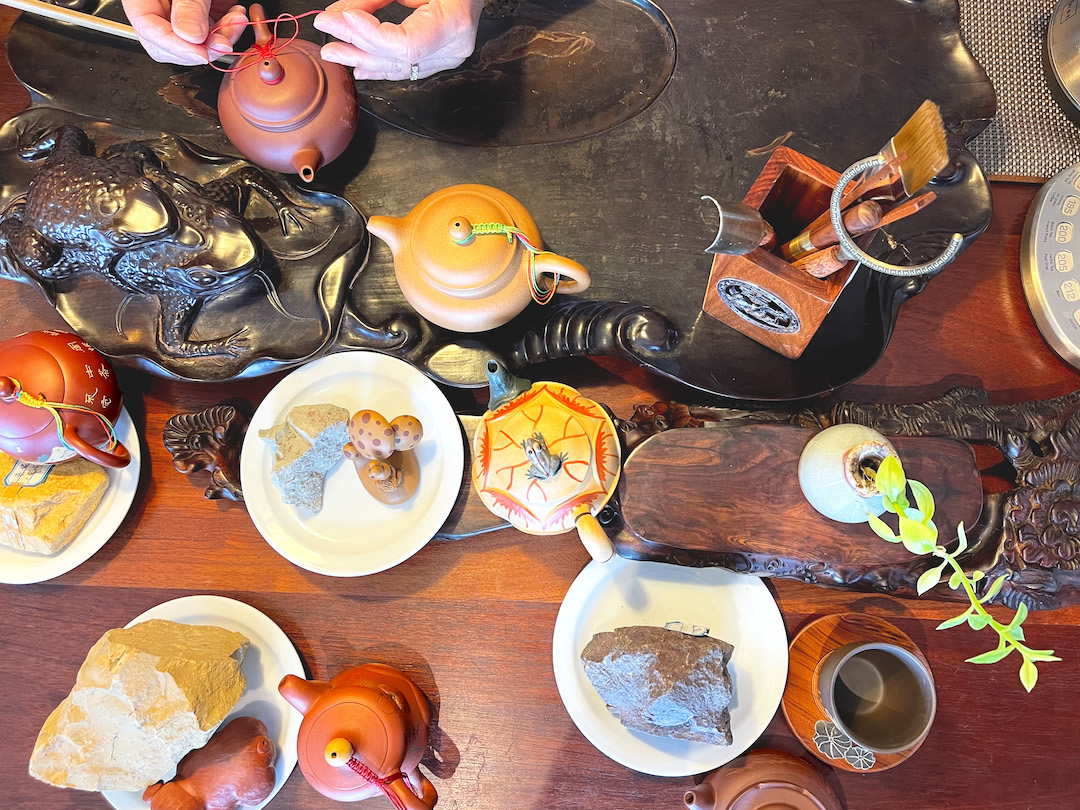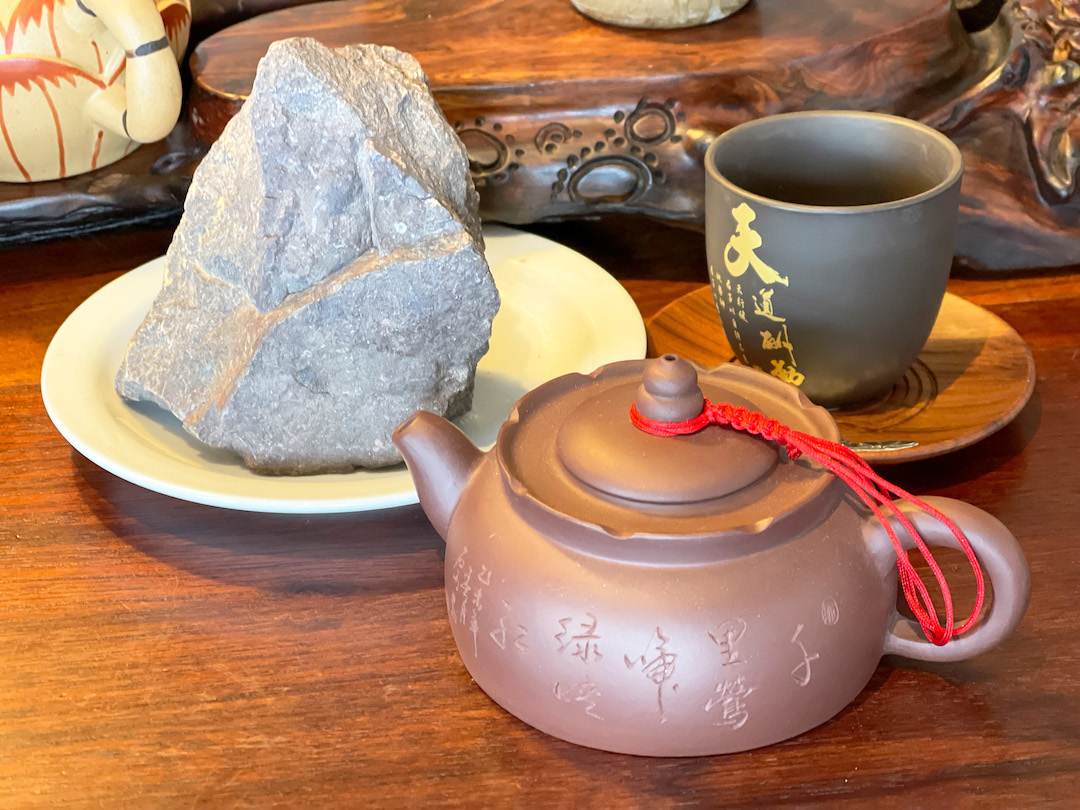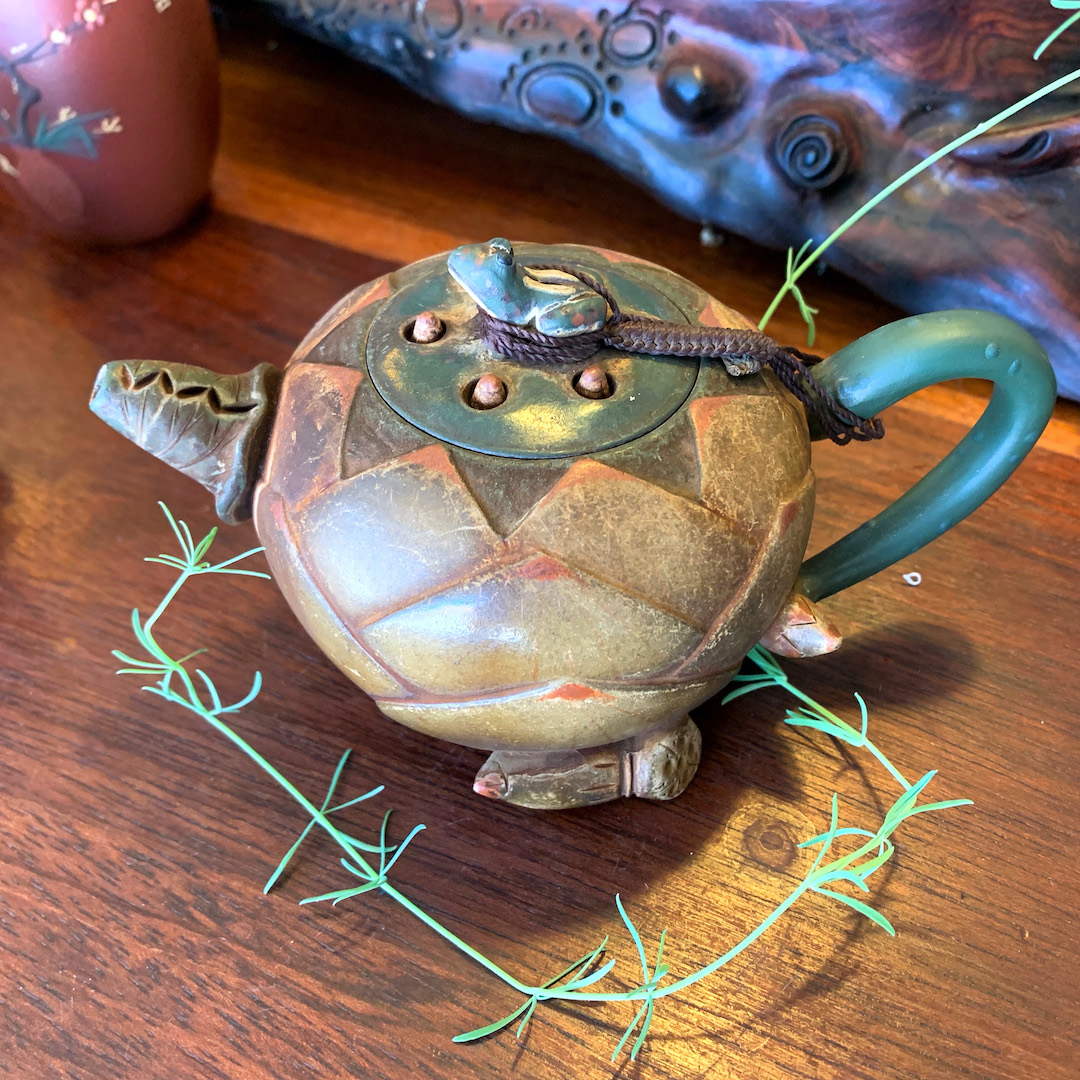Newsletter Archive Aug. 12, 2022

This weekend, we’re featuring all Yixing teaware. Need something to brew in that handsome new teapot? We recommend these three classics of Wuyi Rock Wulong: Rougui (Cassia Bark), Shuixian (Narcissus), and Xiao Hong Pao (Little Red Robe).
The soils of Wuyishan and Yixing are nearly 400 miles apart from each other, but the products that come from these two places make a natural pair. Wuyishan’s Rock Wulong tea (aka Yancha) and Yixing’s distinctive purple sand pottery deliver a singular tea experience together: an infusion concentrated but mellow, robust but sweet.

As the story goes, it was back in the 16th century, in the reign of the Ming Dynasty, when Yixing’s purple sand clay was first made into tea vessels. We owe the invention to the skilled clay-working monks at the Jinsha Temple in Yixing.
Legend actually names one monk in particular, Gong Chun, as the first to craft a teapot from such clay. Gong Chun had learned pottery from observing the other monks as a boy. Later in life, as a skilled clay-worker, Gong Chun was bold enough to try something new and crafted the first tea pot from the unusual local clay. It was, according to legend, very much a work of art. His pot had a naturalistic, tree-bark textured shape, the color of old iron. Recreations of this design bear Gong Chun’s name today — but alas, this fabled first yixing teapot is lost to history.
Scholars can debate the truth in this legend, but one thing is undeniable: the tradition of making teaware from Yixing’s clay is a vibrant and important artform. One reason for its continued relevance is that the material suits tea uniquely well. When brewing rock wulong, the unglazed surface of this porous clay is thought to gently mineralize the infusion, smoothing any rough edges to the flavor, softening heavy roast, and revealing the floral, fruit, and mineral tones beneath it.
But as much as the pot changes the tea, the tea changes the pot. Over the course of many, many brews, you will find your pot absorbing the character of the teas you’ve brewed in it. Teapots raised on rock wulong acquire a rich and dark patina and pleasantly toasty, mossy and mineral scent to their clay that thickens and enhances the base notes of the tea.

We picked out three teas we think pair especially well with Yixing: Rougui, Shuixian, and Xiao Hong Pao.
All three teas are treated with a modest roast, emphasizing their fruit, floral and fragrant wood qualities above all else. Shuixian has the most noticeable roast of the trio, but its toasty charred wood quickly gives way to dark green florals and smooth mineral mouthfeel. Xiao Hong Pao’s light body and layers of airy tropical fruit notes make it the most aroma-focused of the group. Lastly, Rougui hits the middle mark with warm cassia and thick, mossy incense dimensions.
